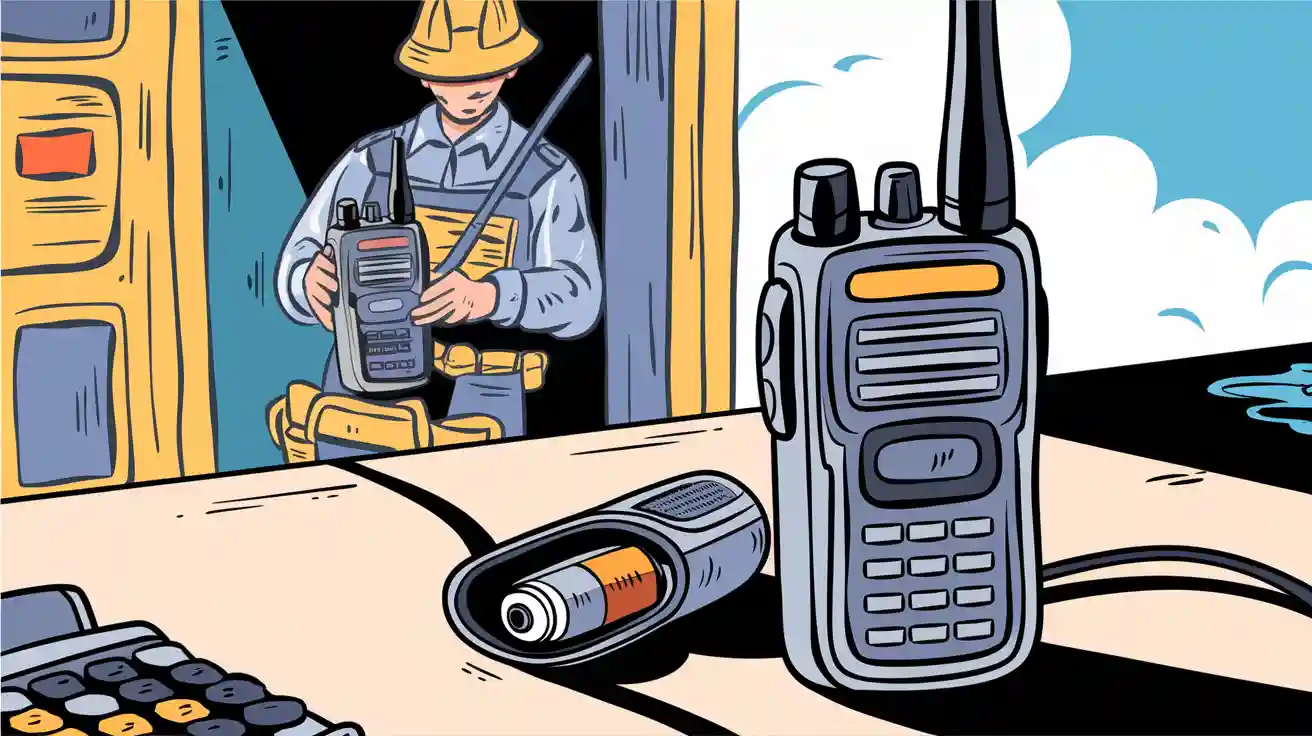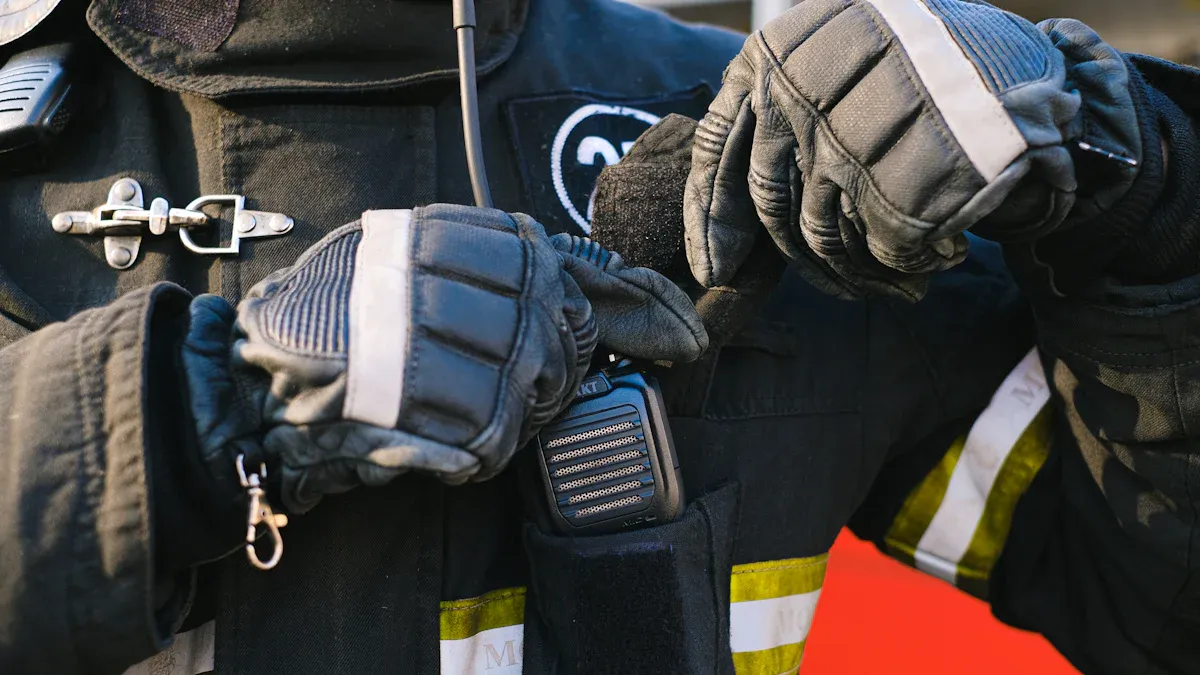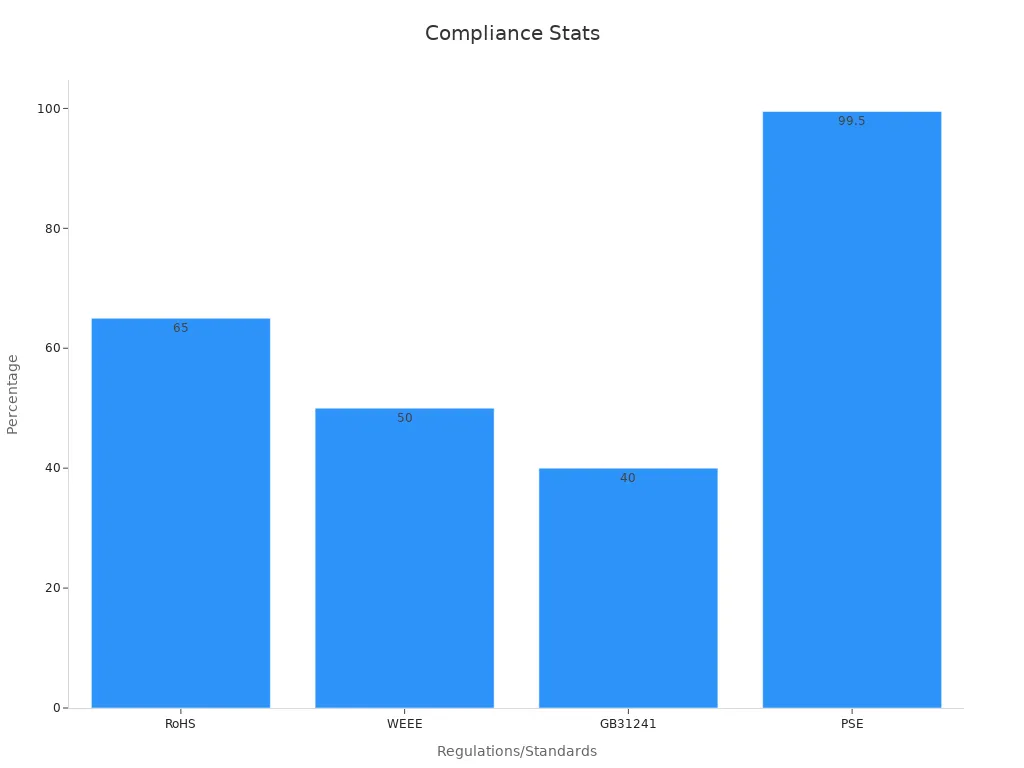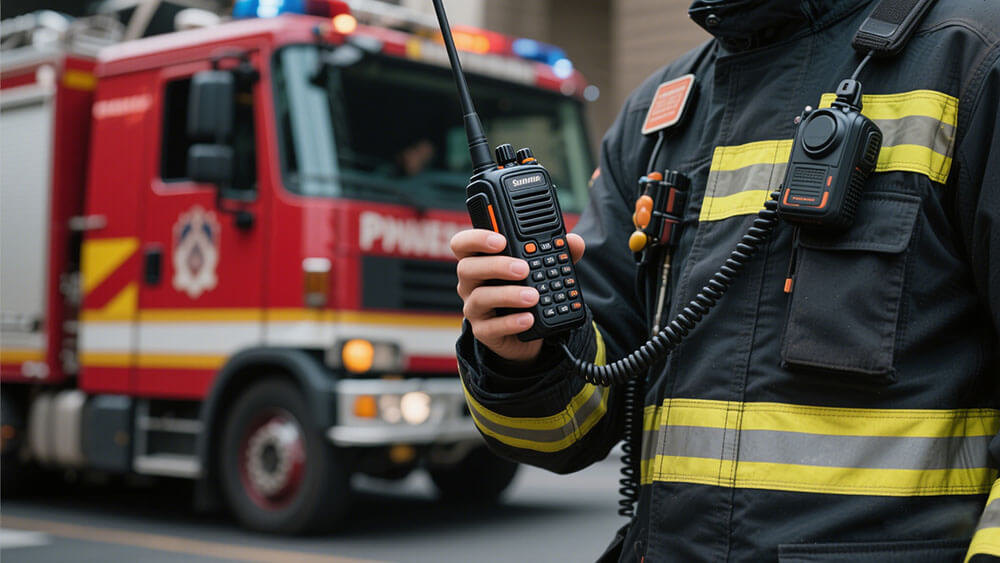Contents

Reliable communication depends on a well-functioning two way radio battery. High-performance batteries ensure your radios operate without interruptions, even in demanding conditions. Industries like emergency services prioritize tools with long-lasting power and quick charging. These batteries are essential for maintaining safety and efficiency, especially in harsh environments where failure is not an option.
Key Takeaways
Good two-way radio batteries are key for staying connected in emergencies. Pick batteries made for tough conditions to stay safe and work well.
Lithium-ion batteries last longer and charge quickly. Choose batteries with more power to handle long hours and avoid delays.
Taking care of batteries and storing them right makes them last longer. Check for damage and charge them correctly to keep them working their best.

Part 1: The Importance of Reliable Two-Way Radio Batteries
1.1 Ensuring Communication in Emergency Scenarios
In emergencies, communication becomes the lifeline for safety and coordination. Two-way radios play a critical role in enabling push-to-talk communication for emergency response teams. Reliable batteries ensure these radios remain operational during extended rescue missions or disaster recovery efforts. For instance, firefighters rely on radios to coordinate in high temperature environments, where battery failure could jeopardize lives. Large Power’s quasi-solid-state batteries are designed to perform in high temperature conditions. Similarly, patrol teams in cold regions need batteries that deliver consistent power despite freezing temperatures. Without dependable batteries, team communication can falter, leading to delays and compromised safety.
Tip: Always choose batteries designed for extreme conditions to ensure uninterrupted communication during emergencies.
1.2 Meeting Industry-Specific Power Demands
Different industries have unique requirements for two-way radios, making reliable batteries indispensable. These radios are essential in environments where cellular networks are unreliable, such as construction sites, manufacturing plants, and oil rigs. Government regulations often mandate their use in public safety and construction to ensure effective communication during emergencies.
Why reliable batteries matter:
Enhanced communication and safety in critical sectors.
Extended operating lifespans for long shifts in utilities and transportation.
Compliance with industry standards for regulated environments.
For mining, oil and gas operations, explosion-proof batteries are vital to prevent hazards. In mining, rugged designs ensure durability against dust and moisture. Outdoor sports and defense applications demand batteries with IP68 ratings, capable of functioning underwater for hours. Selecting batteries tailored to your industry ensures optimal performance and safety.
1.3 Performance in Extreme Environments
Two-way radios often operate in harsh conditions, requiring batteries that can withstand environmental stressors. High-quality batteries are engineered to perform reliably in extreme temperatures, high humidity, and challenging terrains. For example, Large Power’s batteries feature advanced technology to prevent overheating and ensure durability.
Test Type | Description |
|---|---|
Temperature Test | Radios are subjected to temperatures ranging from -35°C to +75°C to ensure functionality in extreme conditions. |
Shock Test | Equipment undergoes multiple heating and cooling cycles to test durability under shock conditions. |
Dust and Water Filtering | Radios are designed to filter out smoke, dust, and water, ensuring continued performance during emergencies. |
Cold weather slows chemical reactions, reducing power delivery, while excessive heat can degrade battery components. High humidity may cause corrosion, leading to short circuits. Altitude changes subtly affect battery capacity, impacting performance in high-elevation operations. Batteries designed for these challenges ensure your radios remain operational, regardless of the environment. Consult Large Power for your next two-way radio battery project.
Part 2: Features of High-Quality Two Way Radio Batteries
2.1 Extended Battery Life for Long Shifts
When you rely on two-way radios for long shifts, extended battery life becomes a critical feature. High-quality batteries are designed to last through demanding workdays without requiring frequent recharges. For example, Large Power’s lithium polymer battery tailored for our clients delivers exceptional longevity, lasting over 20 hours per charge.
To meet varying operational needs, manufacturers offer different battery capacities:
For Maximum Runtime: Opt for the 4000mAh+ version to ensure the longest possible battery life during extended shifts.
For Standard Use: Choose the 2500mAh+ variant for routine daily operations.
By selecting batteries with higher capacities, you can maintain uninterrupted communication throughout your workday, ensuring efficiency and reliability.
2.2 Rugged Design for Challenging Conditions
Two-way radios often operate in environments where durability is non-negotiable. Batteries with rugged designs ensure consistent performance even under extreme conditions. Manufacturers like Large Power conduct rigorous tests to replicate real-world challenges, including:
Drop tests to assess impact resistance.
Vibration tests to simulate movement during transport or use.
Electrostatic discharge tests to measure resilience against electrical interference.
These tests confirm that rugged batteries outperform competitors in durability, making them ideal for industries like construction, mining, and emergency services. Field data further validates their reliability:
Rugged batteries maintain performance in freezing and hot temperatures.
They withstand power-draining peripherals, increased screen brightness, and constant connectivity demands.
Hot-swappable systems allow you to replace batteries without shutting down devices, ensuring uninterrupted service.
With these features, rugged batteries enhance radio performance and longevity, even in the harshest environments.
2.3 Fast Charging for Operational Readiness
Fast charging technology is essential for maintaining operational readiness. High-quality batteries incorporate adaptive power management systems that optimize charging speed without compromising battery health. This feature minimizes downtime, allowing you to quickly recharge your two-way radios and resume communication.
For industries requiring continuous operation, fast charging paired with high-capacity multi-cell batteries ensures extended use. Some models even offer over 20 hours of runtime on a single charge, making them indispensable for long shifts. By investing in batteries with fast charging capabilities, you can reduce delays and maintain seamless communication during critical operations.
2.4 Compliance with Industry Standards
Compliance with industry standards ensures that two-way radio batteries meet established safety and performance benchmarks. Manufacturers adhere to regulations across regions to guarantee reliability and environmental responsibility.
Region | Regulation/Standard | Key Compliance Requirements |
|---|---|---|
European Union | Restriction of Hazardous Substances (RoHS) | Limits on hazardous substances like cadmium and lead; promotes lithium-based chemistries dominating 65% market. |
Waste Electrical and Electronic Equipment (WEEE) | Requires battery recycling rates exceeding 50%; impacts production costs by 8–12%. | |
North America | Federal Communications Commission (FCC) | Enforces limits on electromagnetic interference; necessitates shielded designs. |
Energy density requirements | Drives demand for batteries with capacities exceeding 3000mAh, as seen in military applications. | |
Asia-Pacific | GB 31241-2014 (China) | Imposes safety tests for lithium batteries; reduced non-compliant imports by 40% since 2019. |
Electrical Appliance and Material Safety (PSE) (Japan) | Requires tamper-proof labeling and third-party testing; ensures 99.5% compliance rates in domestic markets. |
These standards ensure that batteries are safe, durable, and environmentally friendly. By choosing compliant batteries, you can trust their reliability and performance in professional applications.

Part 3: Consequences of Poor Battery Performance in Two-Way Radios
3.1 Risks of Communication Failures
Poor battery performance can lead to critical communication failures, especially in high-stakes scenarios. When batteries fail unexpectedly, teams lose their ability to coordinate effectively, putting lives and operations at risk.
During the Falkland War, neglected batteries caused portable missiles to fail, highlighting the catastrophic consequences of unreliable power sources.
A government organization reported a drastic drop in battery capacity from 100% to 20% within a year due to poor maintenance, severely impacting communication reliability.
A fire brigade resolved chronic communication issues by servicing their batteries, enabling successful coordination during a demanding ten-hour emergency call.
In extreme environments, such as firefighting or cold-weather patrols, battery failure can compromise safety. High temperatures can degrade battery components, while freezing conditions reduce power output. Reliable batteries ensure two-way radios remain operational, maintaining seamless communication when it matters most.
Note: Regular maintenance and choosing batteries designed for extreme conditions can significantly reduce the risk of failures.
3.2 Operational Inefficiencies and Delays
Unreliable batteries disrupt workflows, causing delays and inefficiencies. When two-way radios lose power mid-operation, teams must pause to replace or recharge batteries, wasting valuable time. This downtime can hinder productivity in industries like construction, mining, and emergency services.
For example, outdoor sports teams and defense units rely on rugged, long-lasting batteries to maintain communication in remote areas. A sudden battery failure can force teams to halt operations, delaying critical tasks and increasing operational costs.
Fast-charging and hot-swappable battery systems can mitigate these inefficiencies, ensuring uninterrupted communication and smoother workflows. Investing in high-quality batteries reduces the likelihood of delays, keeping your operations running efficiently.
3.3 Increased Costs from Frequent Replacements
Frequent battery replacements can strain budgets, especially for organizations relying on large fleets of two-way radios. The economic impact of poor-quality batteries includes higher replacement costs and increased downtime.
The demand for rechargeable batteries is growing due to their cost-effectiveness and environmental benefits.
Lead storage batteries, while durable, have price inelasticity, meaning frequent replacements can lead to significant financial burdens.
Different battery types have varying cost implications, with rechargeable options offering long-term savings.
By choosing high-quality, rechargeable lithium-ion batteries, you can reduce replacement frequency and lower overall costs. These batteries not only improve performance but also align with sustainability goals, making them a smart investment for any organization.

Part 4: Tips for Optimizing Two Way Radio Battery Performance
4.1 Best Practices for Charging
Proper charging practices are essential to extend the life of your two-way radio batteries. Following manufacturer-recommended guidelines ensures optimal performance and longevity.
Use battery analyzers to assess the state-of-health regularly.
Avoid overcharging by removing batteries from chargers once fully charged.
Implement power-saving settings on your radios to maximize battery efficiency.
Charge batteries in environments with moderate temperatures to prevent overheating or freezing.
Tip: Analyze your battery usage patterns to tailor charging schedules for maximum efficiency.
4.2 Regular Maintenance and Inspections
Routine maintenance prevents unexpected failures and extends battery life. Inspect your batteries regularly for signs of damage, such as leaks, swelling, or corrosion. Recharge lithium-ion batteries every three months and nickel-metal hydride batteries monthly when not in use.
Replacing batteries every 18 months ensures reliable communication, especially in critical operations. Regular testing with battery analyzers can help you identify potential issues early, avoiding downtime during essential tasks.
Note: Always store batteries in a clean, dry environment to prevent corrosion and degradation.
4.3 Selecting Batteries for Specific Applications
Choosing the right battery for your application is crucial for maintaining seamless communication. Different industries require batteries with specific features:
Emergency Services: Opt for batteries designed for extreme temperatures and long shifts.
Construction and Mining: Select rugged batteries that resist dust, moisture, and impact.
Outdoor Activities: Use batteries with high IP ratings for water and dust resistance.
Matching the battery type to your operational needs ensures reliability and efficiency. For example, explosion-proof batteries are ideal for minning, oil and gas industries, while high-capacity batteries suit long-duration tasks.
4.4 Proper Storage to Prevent Degradation
Storing batteries correctly can significantly extend their lifespan. Keep them in a cool, dry place away from direct sunlight or extreme temperatures. Avoid storing batteries in fully charged or completely discharged states, as this can degrade their capacity over time.
Storage Tips:
Proper storage practices not only preserve battery health but also ensure your two-way radios remain operational when needed.
Reliable two-way radio batteries ensure seamless communication in critical scenarios. Investing in high-quality options enhances safety and efficiency. To maximize performance, follow best practices: use power-saving features, optimize transmission power, and charge batteries fully before use. Regular maintenance, like checking battery contacts and storing them properly, ensures long-term reliability.
FAQ
What is the average lifespan of a two-way radio battery?
The lifespan depends on usage and maintenance. Typically, high-quality batteries last 18-24 months with proper care and regular inspections.
How can you tell if a battery needs replacement?
Signs include reduced runtime, overheating during charging, or visible damage like swelling or leaks. Regular testing helps identify failing batteries early.
Are all two-way radio batteries interchangeable?
No, compatibility depends on the radio model and battery type. Consult Large Power to custom lithium battery solutions for your next two-way radio project.





